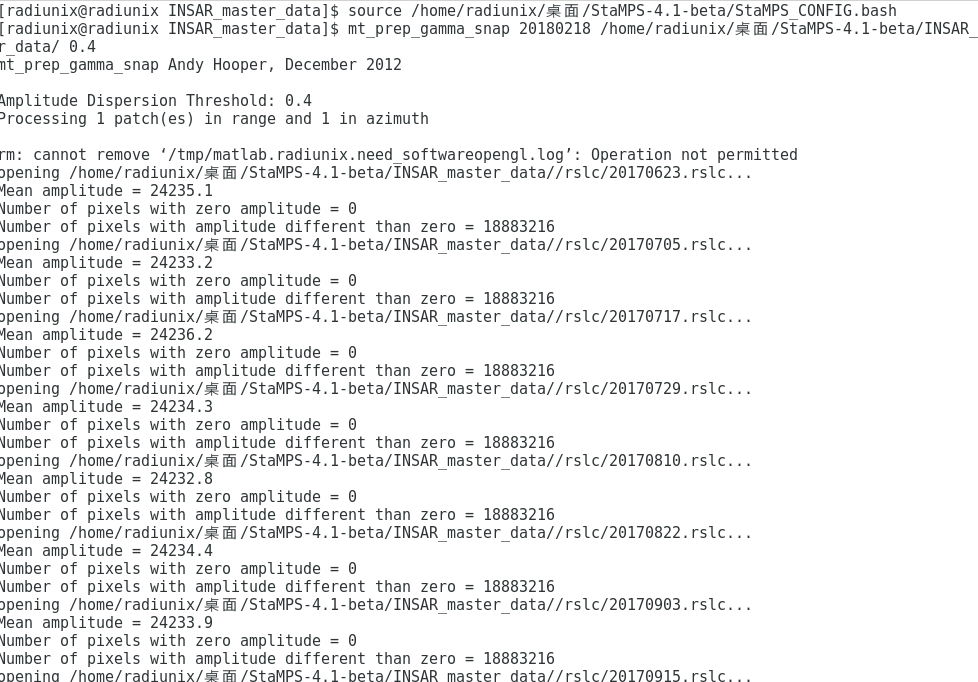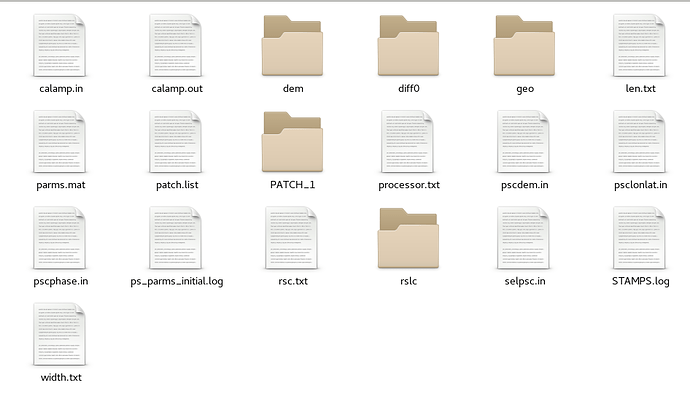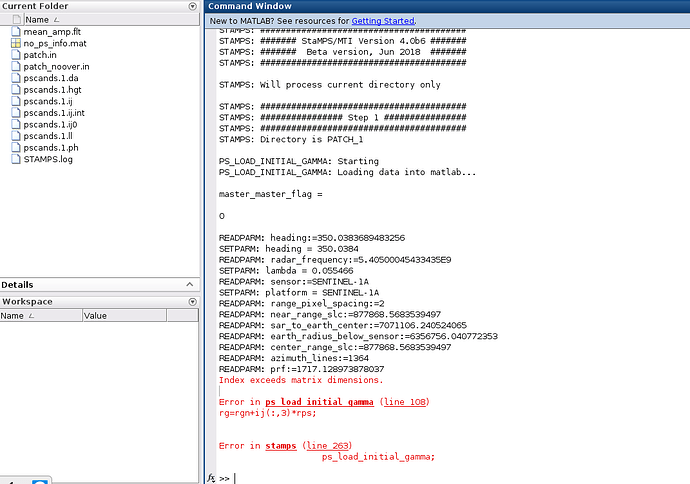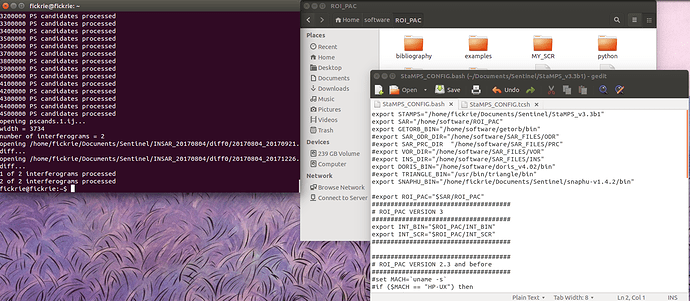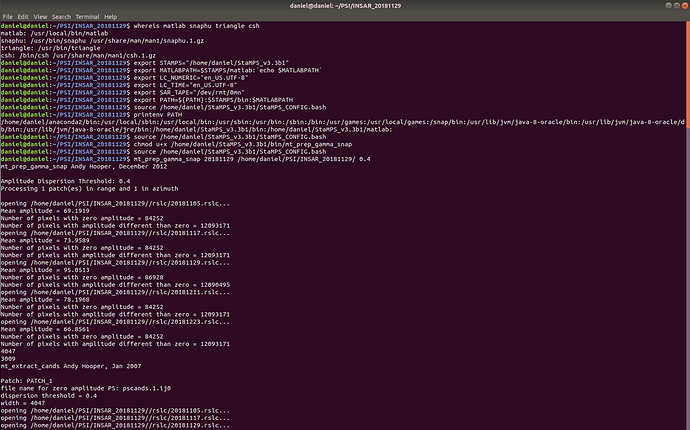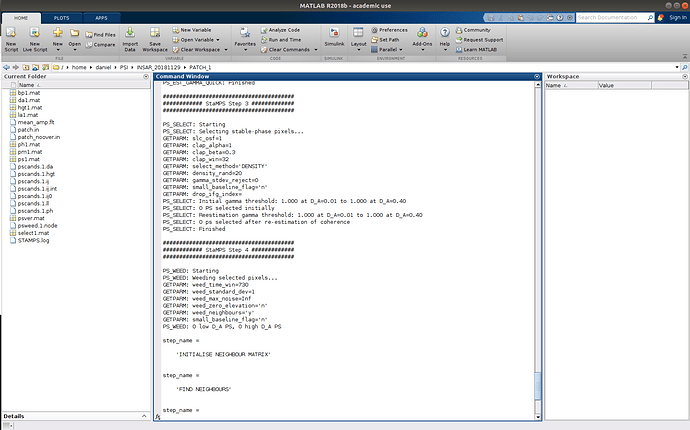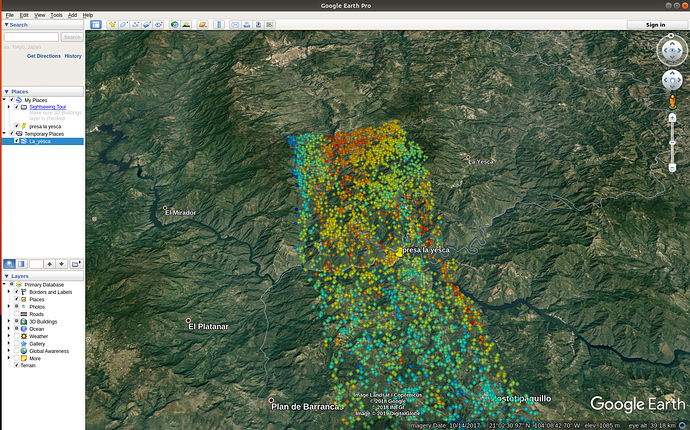Hello all. I’m having a hard time running Stamps here. Can anyone tell me what’s wrong? Thanks
Finally solved it. my area of interest was too small. moreover, snap had added an extra layer to my stacks without any reason. So I removed it, selected a larger area and ran the code using Stamps 3.01. worked fine
Hello, @ABraun thanks. i am now able to launch StaMPS. however i still have question, after processing the interferograms it didn’t launch matlab to process further.
is it because of the number of interferograms?
2 interferograms (3 images) are not enough for PS InSAR. To get reliable results, time series of 20 images or more are reocommended.
As answered by ABraun you must use images more the 20, or at least 4 interferograms (min # accepted by SNAP for StaMPS export).
Hello all.
After overcoming some errors reading manuals and forum posts, I managed to run StaMPS until step 4 where I have this error:
I can see in step 3 that it identifies “0 PS selected initially” and in step 4 “0 low D_A PS, 0 high D_A PS”.
¿Can anybody help me please?
Thanks.
check the Initial gamma threshold value. Its set as “1”, try by decreasing the value
Thank you for you suggest @gomalhunzai ¿whare can i check that? ¿some script of StaMPS?
After many mistakes and read a lot in the forum, I finish StaMPS (1,8) and export a kml file but i think is wrong. Now I need to do a processing with a stack of at least 20 images and read the manuals to interpret the interferograms.
Is there a way to export the results to Geotiff format?
thank you
Nice to see that the technical part works.
You might get better results with a larger stack of images. It would clearly improve the selection of suitable ps and the weeding of noise ect.
I would also recommend to run the steps separately:
stamps(1,1), stamps(2,2),… and check the printed messages, maybe adjusting the parameters which are relevant for the different steps (listed in the manual) with setparm(x,y)
I’m not a Matlab expert, maybe someone can comment on the GeoTiff question.
Thak you @ABraun i will process a stack with 20 images to obtain result better and i will experimet with parameters step by step.
as indicated in chapter 2.1 of the manual, you have to prepare the conf file and set the correct paths for StaMPS, triangle and snaphu and then source the file so these paths (and all scripts which are stored in them) can be found by the shell
Hi,
I have the same issue “0 PS selected initially”.
How did you solve it?
Thanks!
Have you checked if the coregistration in SNAP was sucessful?
Where is you study area and how large is it?
0 is suspicious and something must have gone wrong.
To get a few more, you can increase 0.4 to 0.42 in the mt_prep step.
Thanks for your reply! I think all steps were successful up to this point. But, I am experimenting with a very small stack to see how far I can get in the processing sequence - I have only 5 images in my stack (1 master and 4 slaves) and I think this might be the problem. Do you agree?
yes, the identification of persistent scatterers requires a statistically robust time-series to determine which of the points is stable. So using too few images might result in 0 PS in the end. But at least you can test the pre-processing until the PS selection.
what about this one. https://www.simpliv.com/developmenttool/matlab-app-designing-the-ultimate-guide-for-matlab-apps
Hello @wharfbanger
Sorry for the late response, I solved it by modifying the initial amplitude values and increasing the number of images. I searched the scrip where to modify it but honestly I did not want to move it.
Good luck.
hey…
i’m new to linux and don’t know its basics…neither i’m familar with python programming…
kindly tell me how to install stamps in ubuntu step by step…
thank you
Actually you just download it and make it availabe to you shell by sourcing the conf file as described in the manual.
Note that snaphu and triangle nees to be installed separately.
